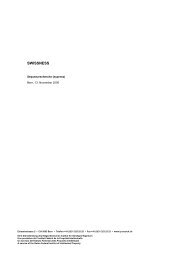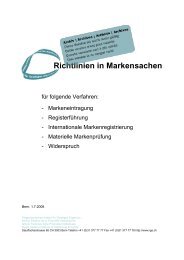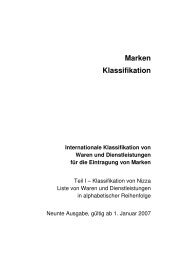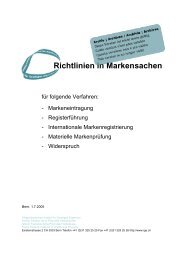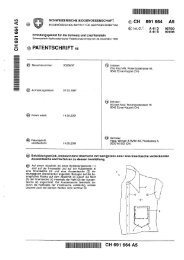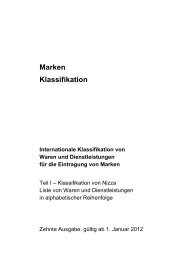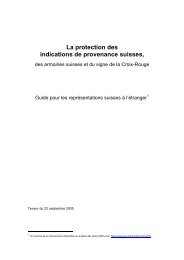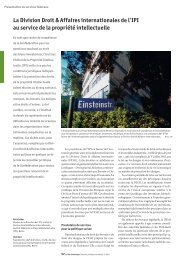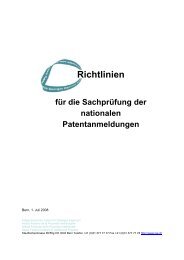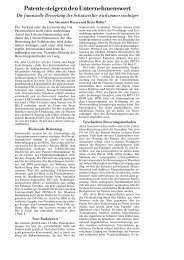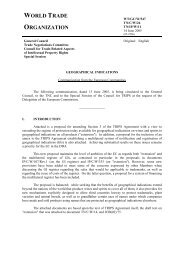AVIS DE DROIT PROTECTION DES SIGNES NATIONAUX
AVIS DE DROIT PROTECTION DES SIGNES NATIONAUX
AVIS DE DROIT PROTECTION DES SIGNES NATIONAUX
Create successful ePaper yourself
Turn your PDF publications into a flip-book with our unique Google optimized e-Paper software.
ROYAUME-UNI<br />
reconsideration by the Chancery Division of the High Court of Justice of England and Wales;<br />
Companies Act 1985, subsec. 32(3).<br />
Where the owner or manager of a business uses a business name containing protected words,<br />
without having obtained permission to do so, he may be convicted of a criminal offence and<br />
sentenced by a first instance criminal court; Business Names Act 1985, sec. 7.<br />
(iii) Other Commercial Use of National Insignia<br />
A person who applies a false trade description to goods or commits any other offence under<br />
the Trade Descriptions Act 1968, or who makes unauthorised use of the names, uniforms or<br />
badges of the organisations designated under the Chartered Associations (Protection of<br />
Names and Uniforms) Act 1926, or of the terms by which their members are commonly<br />
known, may be convicted and sentenced by a first instance criminal court.<br />
Civil remedies for passing off may be imposed upon tortfeasors by the competent civil courts<br />
of the United Kingdom.<br />
b) Qui demande une intervention?<br />
(i) National Insignia Used as Trademarks<br />
No provision is made for the intervention of third parties in proceedings to decide applications<br />
for the registration of national insignia as trade marks; the Registrar should himself consider<br />
whether any protected insignia are involved. In relation to coats of arms held by virtue of a<br />
royal grant, if the Registrar with the advice of the Garter King of Arms considers that an<br />
application involves such arms, he always provides a representation of the arms and the name<br />
of their holder to the applicant, who then has the onus of showing that the holder consents to<br />
their use in a trade mark 298 .<br />
If the point is overlooked at the registration stage, “any person” may apply to have the<br />
registered trade mark declared invalid; Trade Marks Act 1994, subsec. 47(3). The application<br />
may be made either to the Chancery Division of the High Court of Justice of England and<br />
Wales or to the Trade Marks Registry, which has the power to refer proceedings to the Court<br />
at any stage. If he feels that registration resulted from “bad faith” on behalf of the registered<br />
proprietor, the Registrar may himself apply to the Court to have the registration declared<br />
invalid; Trade Marks Act 1994, subsec. 47(4).<br />
Specifically in relation to foreign national flags and notified State emblems, “the competent<br />
authorities” of the relevant State Party to the Paris Convention are authorised to apply for an<br />
injunction restraining any person from using the flag or emblem in the United Kingdom as<br />
part of a registered or unregistered trade mark; Trade Marks Act 1994, subsec. 57(6).<br />
298<br />
Refer to Kitchin, D. et al, Kerly’s Law of Trade Marks and Trade Names (London, 14th ed. 2005), p.<br />
221, para. 8-234.<br />
191



